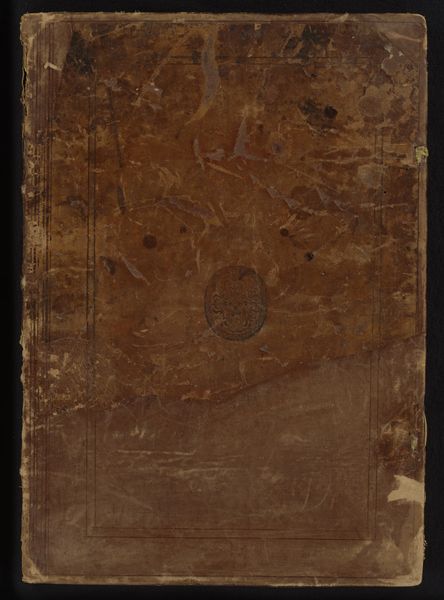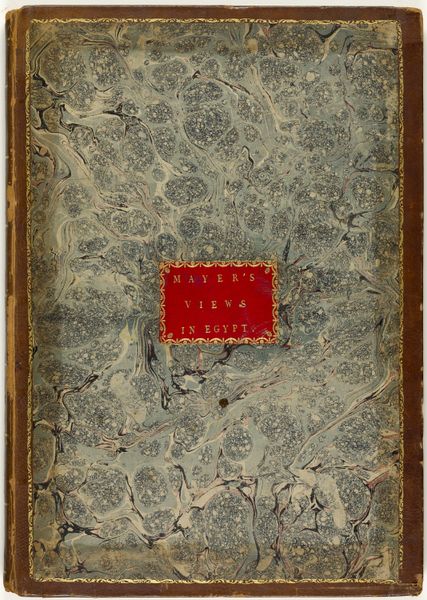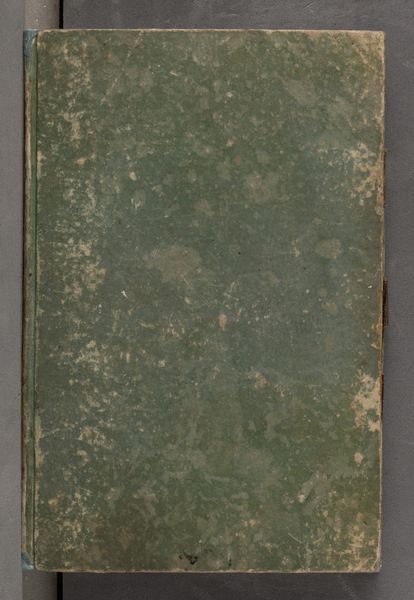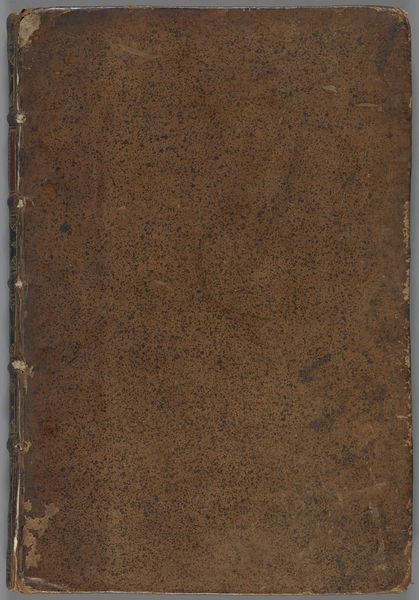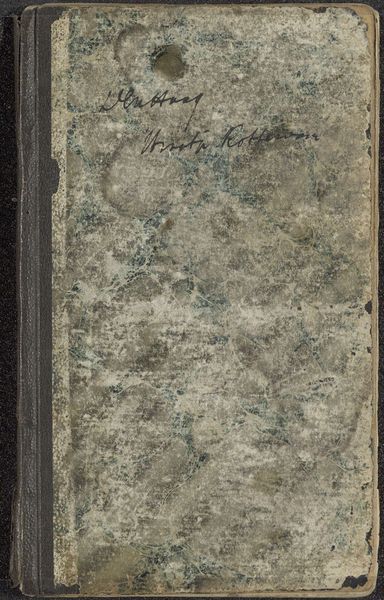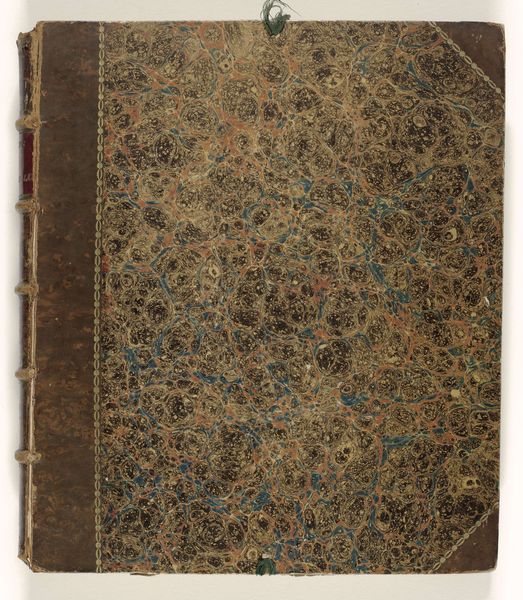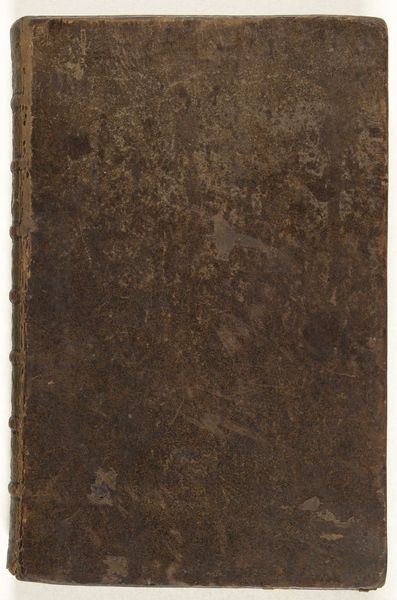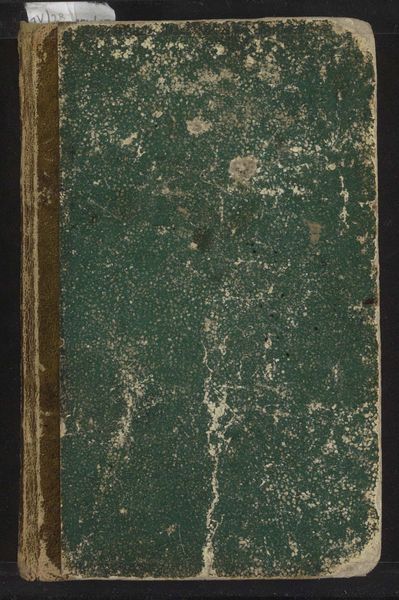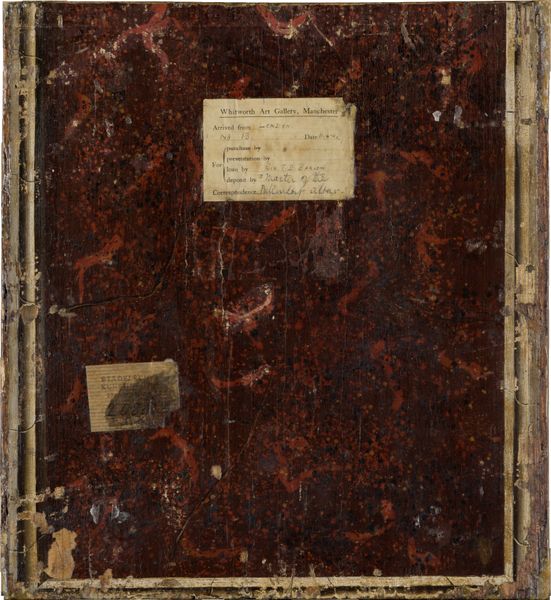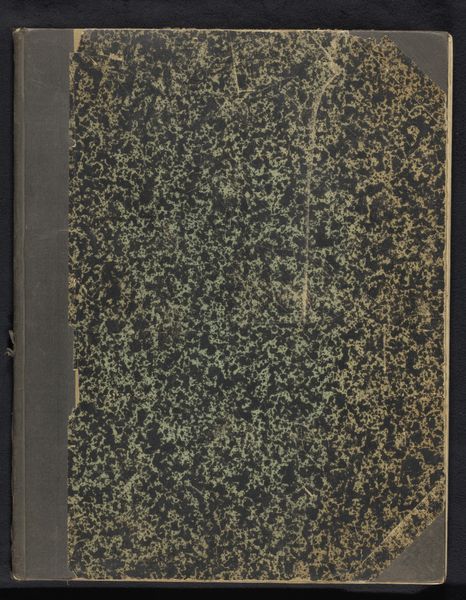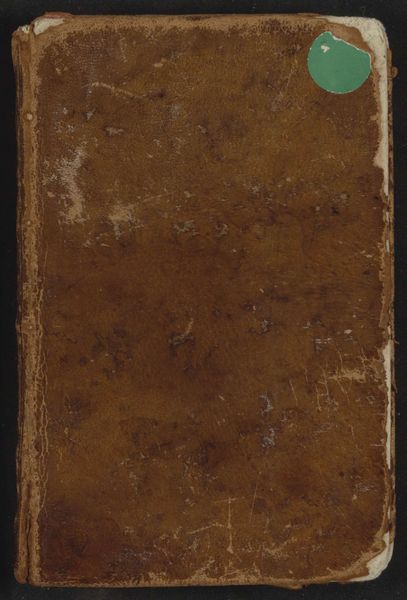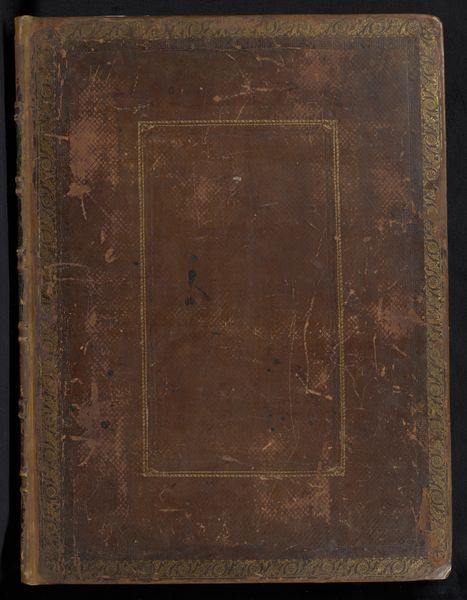
Monument du costume physique et moral de la fin du dix-huitième siècle ou tableaux de la vie 1789
0:00
0:00
drawing, print
#
portrait
#
drawing
# print
#
romanticism
#
watercolor
Copyright: Public Domain
Editor: This is "Monument du costume physique et moral de la fin du dix-huitième siècle ou tableaux de la vie," made in 1789 by Jean Michel Moreau the Younger. It appears to be a bound collection of prints or drawings. The cover is particularly striking, that marbled texture gives the object a tangible sense of age and craftsmanship. What can you tell me about this artwork? Curator: Well, let's start with that very cover you pointed out. Think about the paper marbling process itself, and the labour involved. This wasn't some industrial print, this was artisan production, revealing a culture valuing individualized craft. Consider the social context. In 1789, you've got the French Revolution brewing. The elite were desperately trying to shore up their image while also participating in ever more lavish consumption. This album, detailing costume and morals, functions as a commodity that represents that way of life and ultimately capitalizes on a culture that simultaneously perpetuated those consumption habits while also on the cusp of rejecting it completely. How might the very materials – paper, ink, binding – reflect class distinctions and anxieties of the era? Editor: So it’s less about the pretty pictures and more about how this object was made and consumed, a reflection of the tumultuous times? The making of this volume really encapsulated the tensions between aristocracy and emerging social structures of labour? Curator: Precisely! The 'monument' here isn’t just of costume, it’s a monument to the complex dance between production, material culture, and impending societal shifts. Thinking about the production of these sorts of images complicates how we think about art as discrete, individual works. Editor: I hadn't considered how the very materials themselves could be such a crucial part of understanding its meaning and its cultural moment! This opens my eyes to looking beyond just the images. Curator: Indeed, seeing art this way helps break down established barriers. This reevaluation of labor and material allows for critical discussions regarding the nature, purpose, and potential role of artwork, rather than prioritizing aesthetics and inherent qualities.. Editor: Fascinating. It gives new weight to considering who had access to these sorts of artistic endeavors and, consequently, to portraying themselves through them. Curator: Exactly. The book itself becomes a stage.
Comments
No comments
Be the first to comment and join the conversation on the ultimate creative platform.
